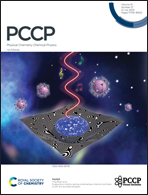Enhancing the ionic conductivity and mechanical properties of PEO-based solid electrolytes through thermal pre-stretching treatment†
Abstract
Pre-stretching as a method for directing polymer crystallization offers a promising solution for addressing the limitations of solid polymer electrolytes in flexible batteries at ambient temperatures. In this study, we have investigated the ionic conductivity, mechanical behaviour, and microstructural and thermal properties of polyethylene oxide (PEO)-based polymer electrolytes with varying pre-strain levels. The results indicate that thermal stretching-induced pre-deformation can significantly increase the through-plane ionic conductivity, in-plane strength, stiffness of solid electrolytes, and cell-specific capacity. However, modulus and hardness decrease for pre-stretched films in the thickness direction. Notably, applying 50–80% pre-strain to the PEO matrix composites through thermal stretching may be preferred for improving the electrochemical cycling performance, as it can increase through-plane ionic conductivity by at least 1.6 times while maintaining compressive stiffness at 80% compared to their unstretched counterparts, while the in-plane strength and stiffness can be boosted by 120–140%. Besides, adding nanoceramics contributes to lithiated PEO exhibiting a higher enhancement coefficient than the pristine sample. This positive effect is because the pre-strain and nano-inorganic filler decrease crystallinity and increase the free volume size of pre-stretched PEO-based electrolytes.



 Please wait while we load your content...
Please wait while we load your content...